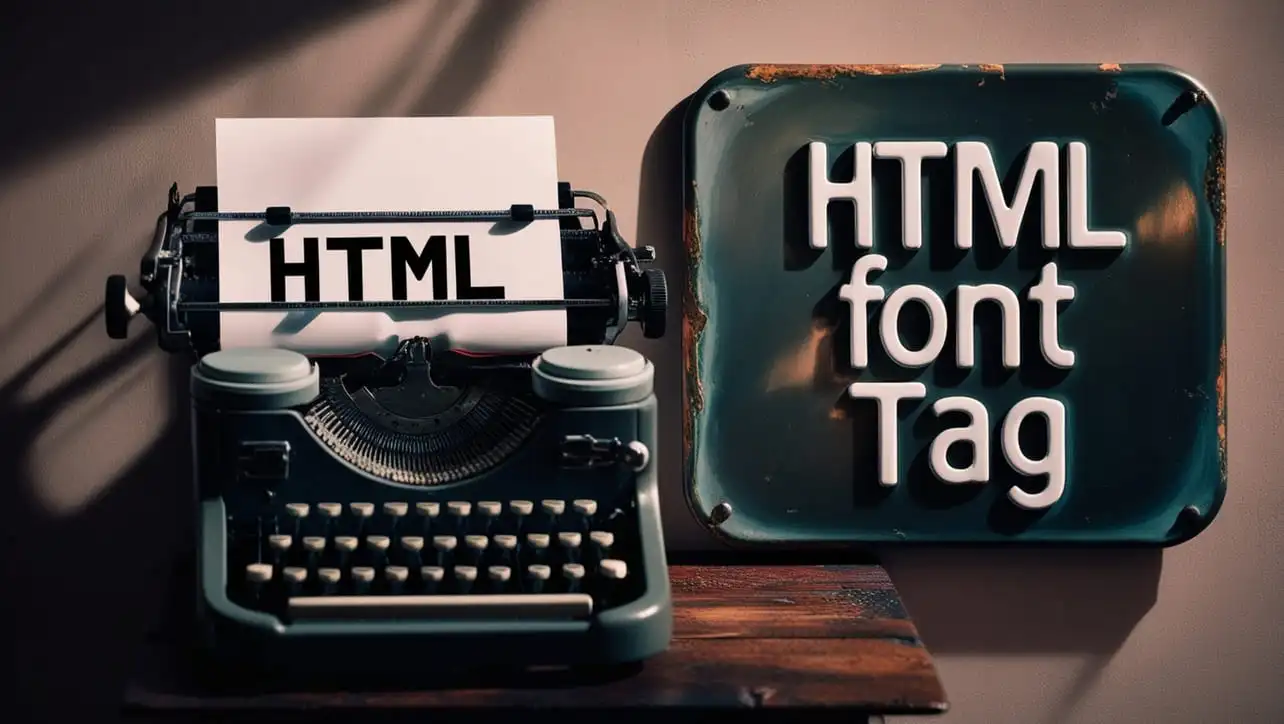
HTML Topics
- HTML Intro
- HTML Basic
- HTML Editors
- HTML CSS
- HTML Tags
- HTML Deprecated Tags
- HTML Events
- HTML Event Attributes
- HTML Global Attributes
- HTML Attributes
- HTML Comments
- HTML Entity
- HTML Head
- HTML Form
- HTML IndexedDB
- HTML Drag & Drop
- HTML Geolocation
- HTML Canvas
- HTML Status Code
- HTML Language Code
- HTML Country Code
- HTML Charset
- MIME Types
HTML font Tag

Photo Credit to CodeToFun
🙋 Introduction
The <font> tag in HTML has been historically used for styling text on web pages.
In this guide, we will delve into the details of the <font> tag, its syntax, attributes, use cases, best practices, and browser support.
🤔 What is <font> Tag?
The <font> tag is an HTML element that was traditionally used for applying text formatting and styling. It allowed developers to control aspects such as font size, color, and family directly within the HTML code.
💡 Syntax
To use the <font> tag, wrap the text you want to style within the opening <font> tag and the closing </font> tag. Specify the desired attributes within the opening tag.
<font size="4" color="blue" face="Arial">Styled Text Here</font>🧰 Attributes
The <font> tag supports several attributes for text styling:
- size: Specifies the size of the font.
- color: Sets the color of the text.
- face: Defines the font family.
<font size="4" color="blue" face="Arial">Styled Text Here</font>📚 Common Use Cases
Basic Text Styling:
The
<font>tag is commonly used for applying basic text styling within a paragraph or heading.basic-text-styling.htmlCopied<p>This is a <font color="green">green</font> word in the middle of a sentence.</p>Inline Styling:
Apply styling directly to a specific piece of text within a larger block of content.
inline-styling.htmlCopied<h2>Welcome to our <font color="red">red-themed</font> website!</h2>
🖥️ Browser Support
Understanding the compatibility of the <font> tag across different browsers is essential for delivering a consistent user experience. Here's an overview of its support:
- Google Chrome: Limited support.
- Mozilla Firefox: Limited support.
- Microsoft Edge: Limited support.
- Safari: Limited support.
- Opera: Limited support.
- Internet Explorer: Partial support (some versions may have limitations).
Ensure you test your code in various browsers to guarantee a seamless experience for your audience.
🏆 Best Practices
- Use CSS Instead: While the
<font>tag was widely used in the past, it's now considered outdated. Modern best practices recommend using CSS for styling to separate content and presentation. - Accessibility: Avoid using the
<font>tag for essential content. Use semantic HTML and CSS to ensure accessibility for all users.
🎉 Conclusion
While the <font> tag was once a go-to for text styling, it is now considered outdated, and the use of CSS is encouraged for a more flexible and maintainable approach. Embrace modern web development practices to create visually appealing and accessible content.
👨💻 Join our Community:
Author

For over eight years, I worked as a full-stack web developer. Now, I have chosen my profession as a full-time blogger at codetofun.com.
Buy me a coffee to make codetofun.com free for everyone.
Buy me a Coffee












If you have any doubts regarding this article (HTML font Tag), please comment here. I will help you immediately.